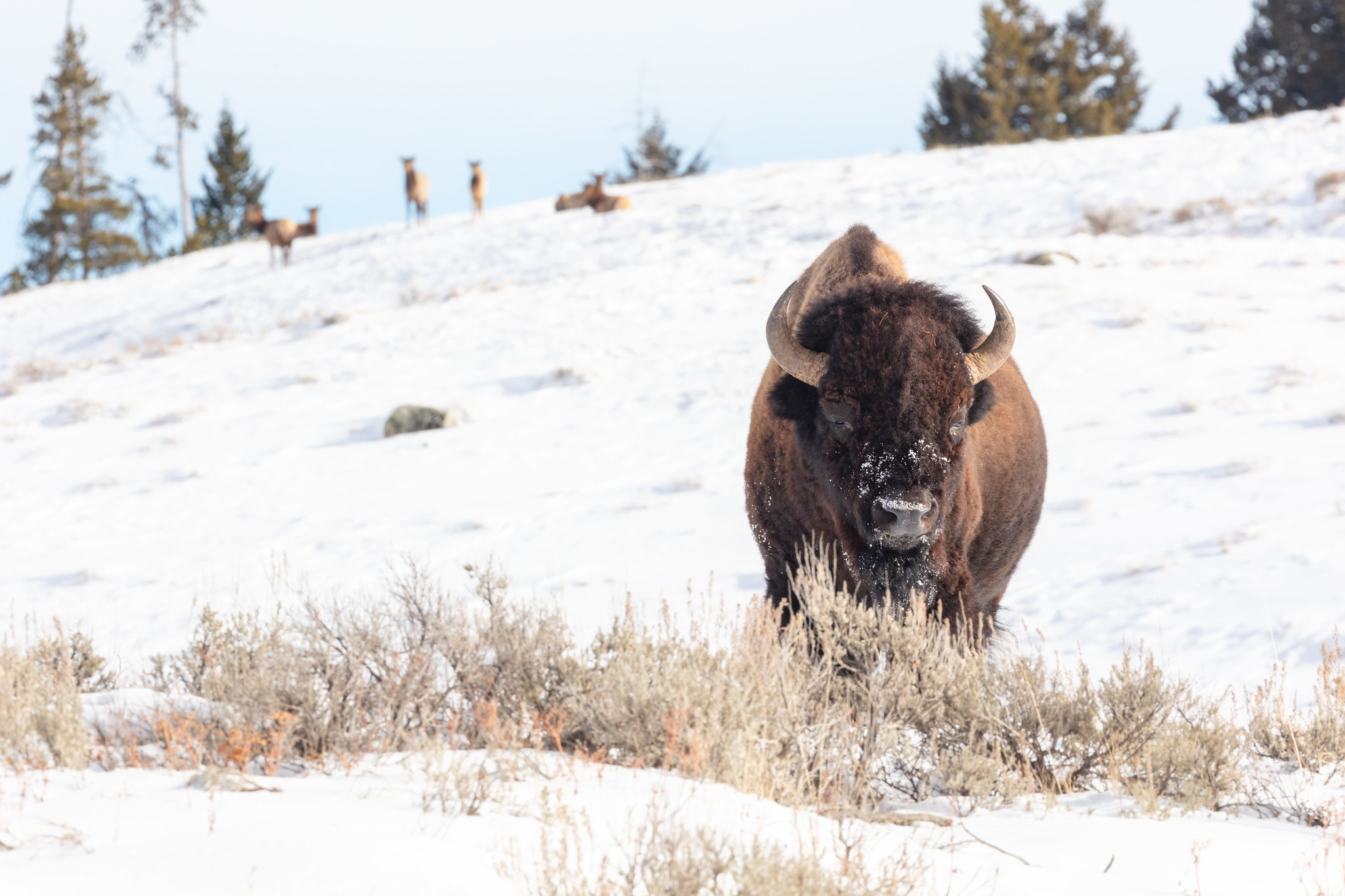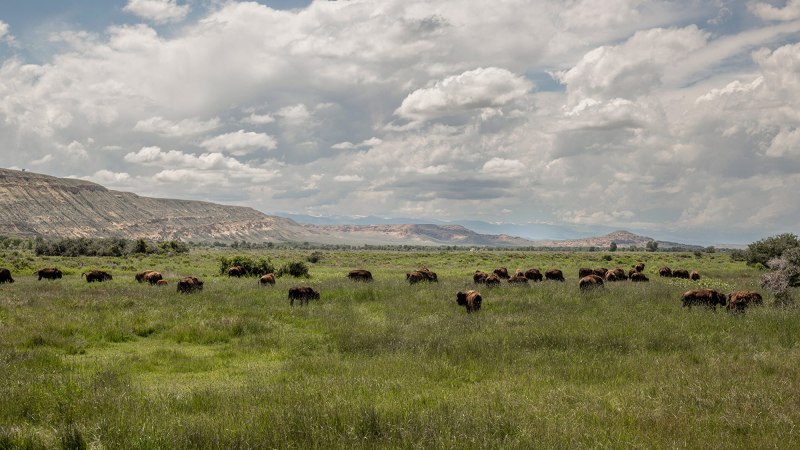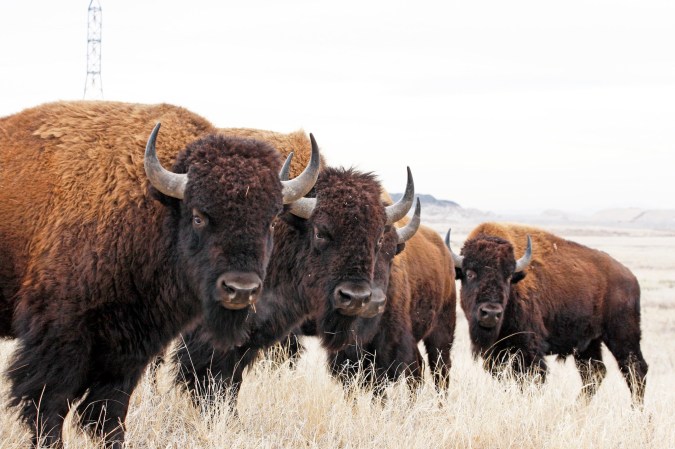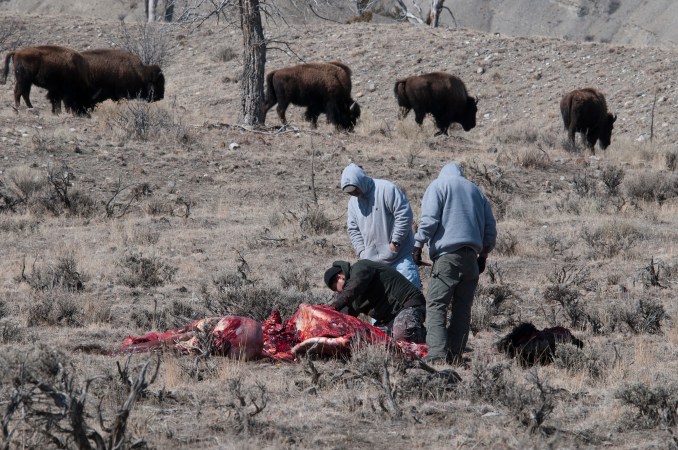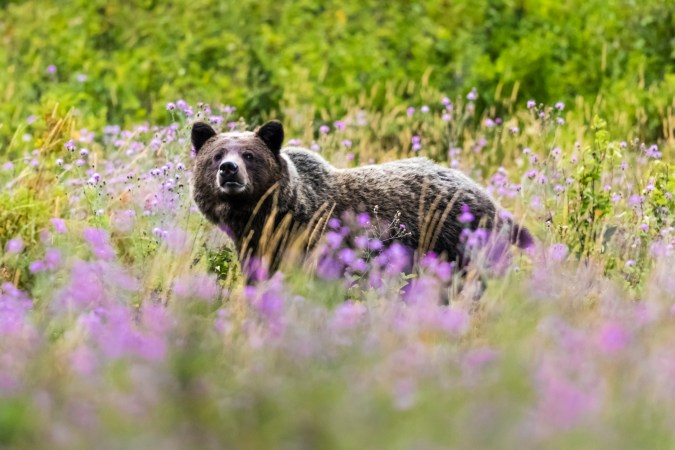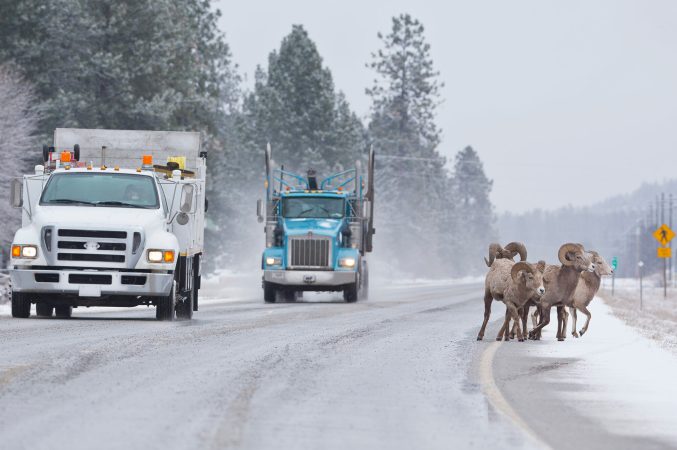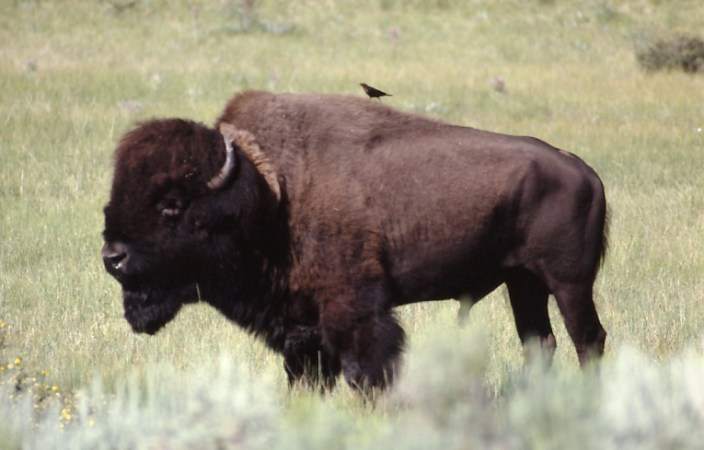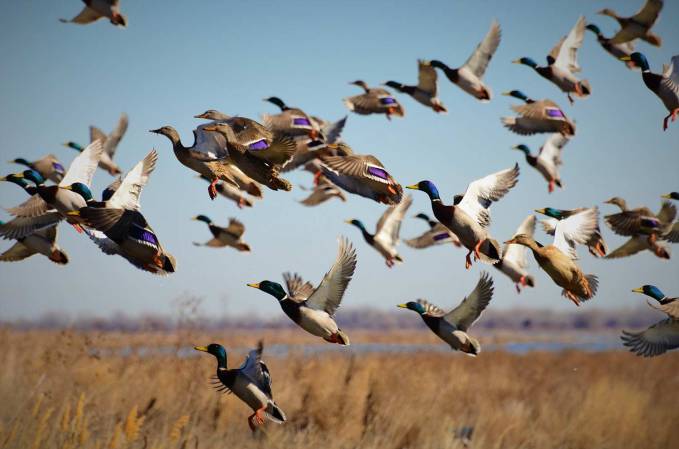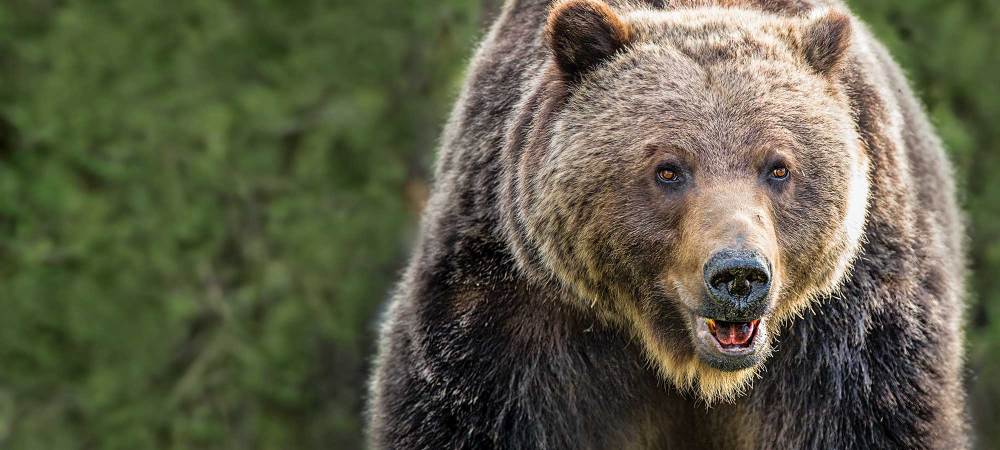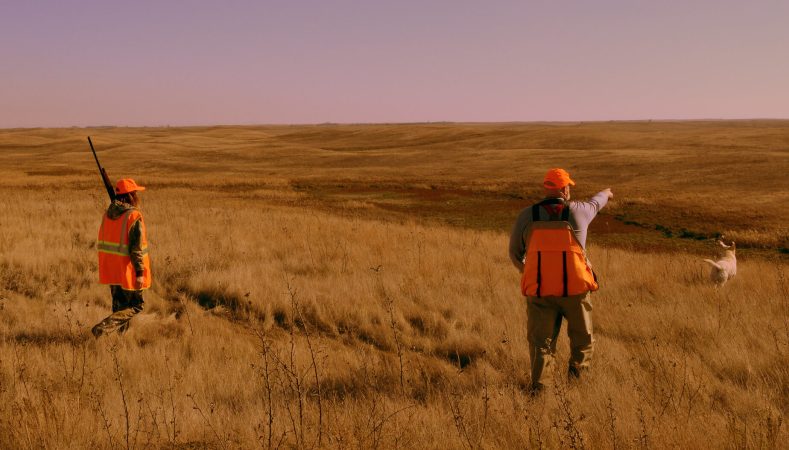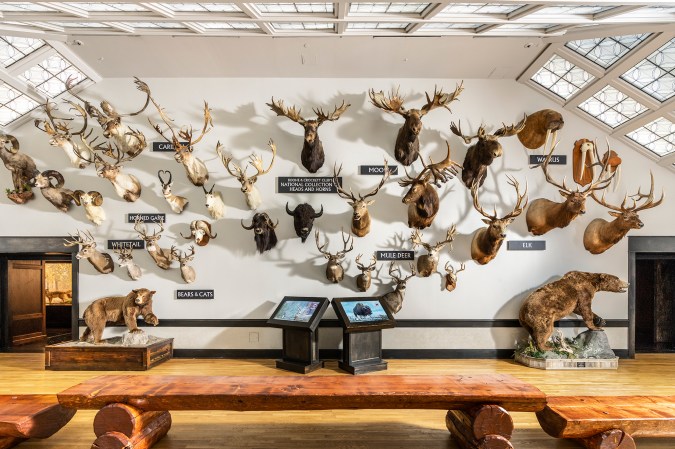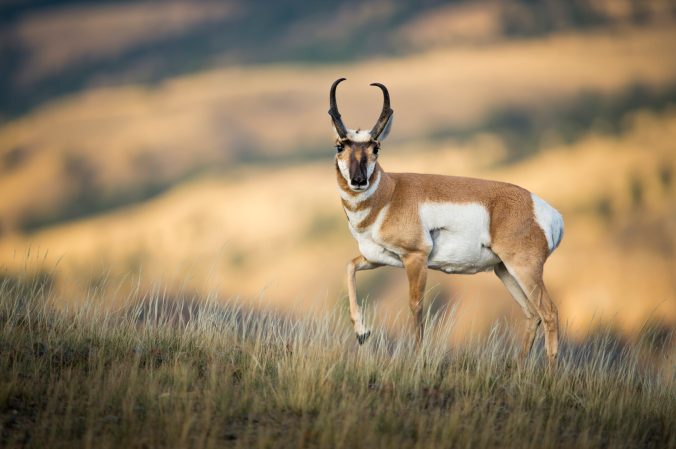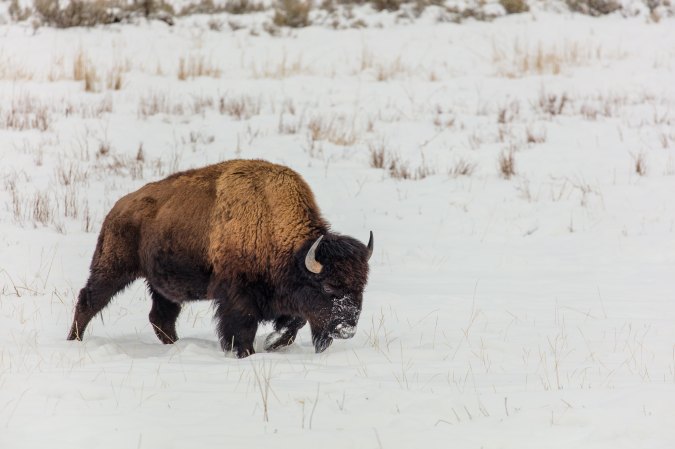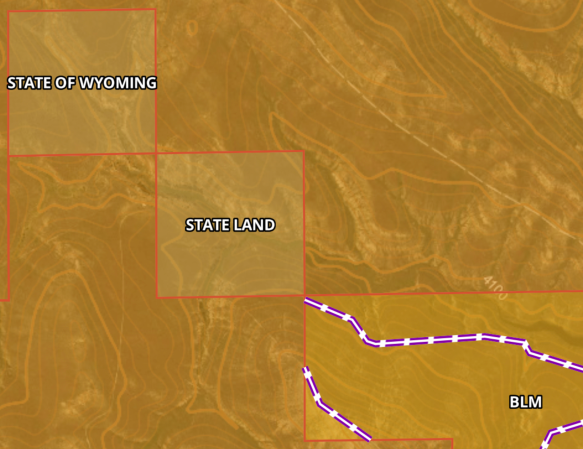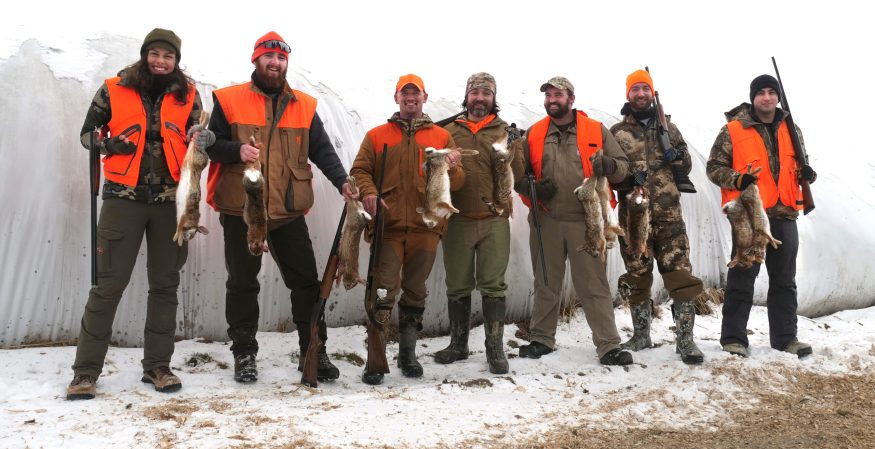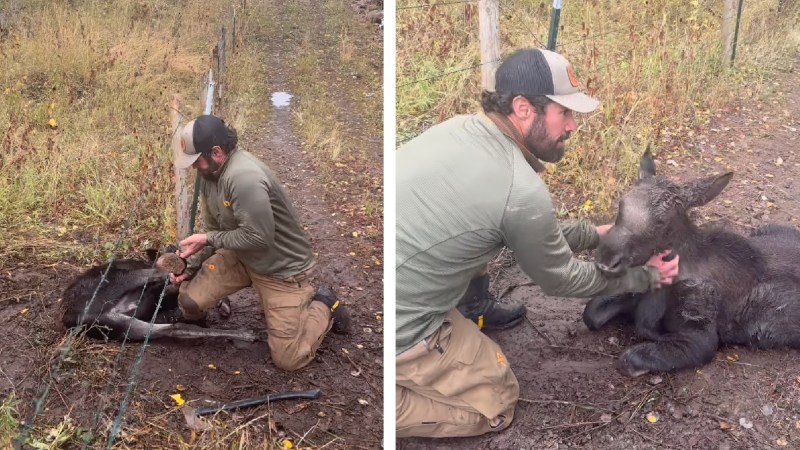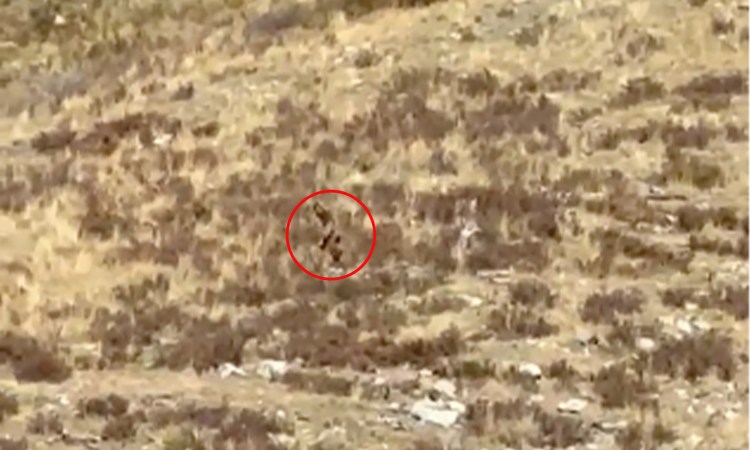William Temple Hornaday must have been miserable. It was November tipping into December of 1886 when Hornaday and his crew of seven pushed into the cold, joyless, wind-chapped badlands of what is now Garfield County, Montana, on the gumbo divide between the Yellowstone and Missouri rivers. The group was on the payroll of the Smithsonian Institution—Hornaday was the Smithsonian’s chief taxidermist—and they were determined to find, kill, skin, and stuff the last remaining American buffalo, which in the previous 20 years had gone from astonishingly plentiful to rare to vanished as railroads and homesteaders shoved into Dakota and Montana territories.
Hornaday, whose first experiences in the West as a student of paleontology had delivered him fossilized evidence of species extinction, was sure buffalo would follow the arc of the dinosaurs, and he was determined to pursue rumors of the last dull-eyed herd that roamed the lonely headlands. Looking back, the expedition was exercising one of the curious paradoxes of hunting: killing animals in order to save a species.
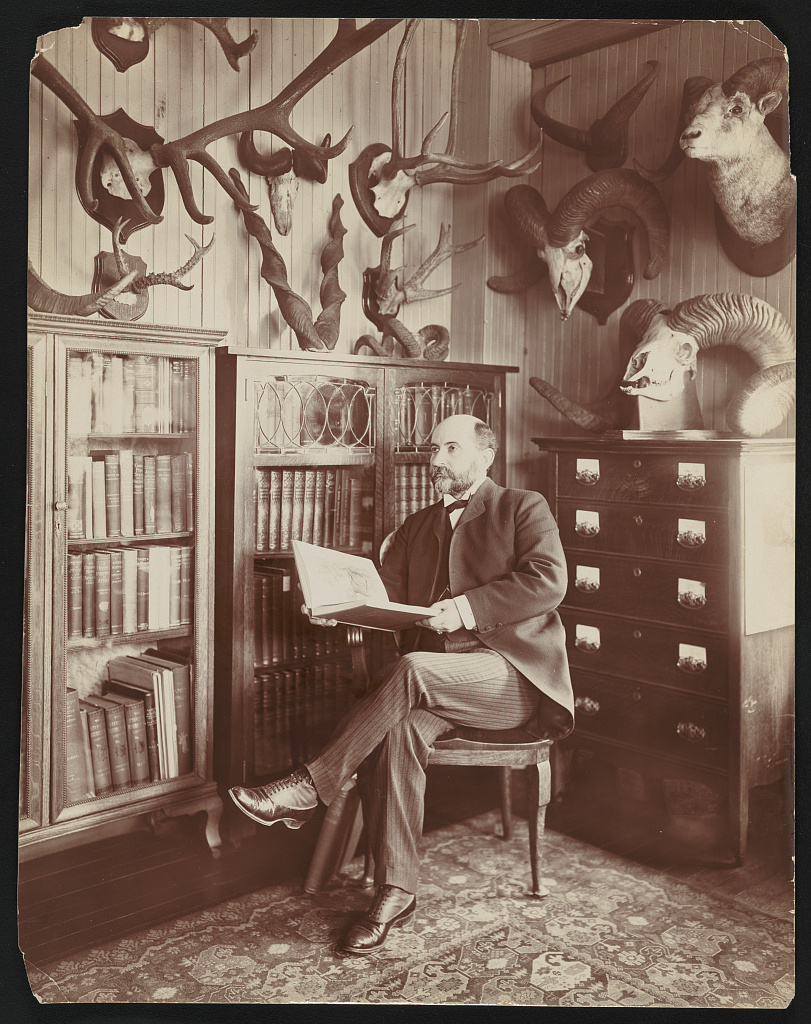
Earlier this fall, I followed archival breadcrumbs to Hornaday’s camp. There’s no sign or marker to identify it, a half-mile off a seldom-traveled gravel road that drunkenly follows the spine of a dirt ridge. What’s left of the camp, after 137 years of wind and weather, is a shallow depression at the base of a rise of chalky shale and crumbled sandstone, an unremarkable grave surrounded by same-looking hoodoos and coulees. When state officials visited this place in 1991 for consideration as a historic site, they found a vintage tin that probably contained canned peaches along with slatted wood, maybe from the floor of a wagon, that Hornaday’s crew might have employed as a roof over their crude dugout. That’s all that remains of this place where you could argue one great American idea died and another was born.
The idea that died here was the notion that in fresh-faced America, we might have it all: productive human communities surrounded by a bountiful natural world. Hornaday was one of the earliest Americans to recognize that headlong settlement of the West was inevitably inconsistent with the existence of bison, and their requirement of large tracts of unfenced wild land. As a naturalist, Hornaday had witnessed the extinction of other victims of American progress: the passenger pigeon, the Audubon bighorn sheep, and the heath hen. He was sure that bison were next, and given their plummeting populations, he wasn’t far wrong.
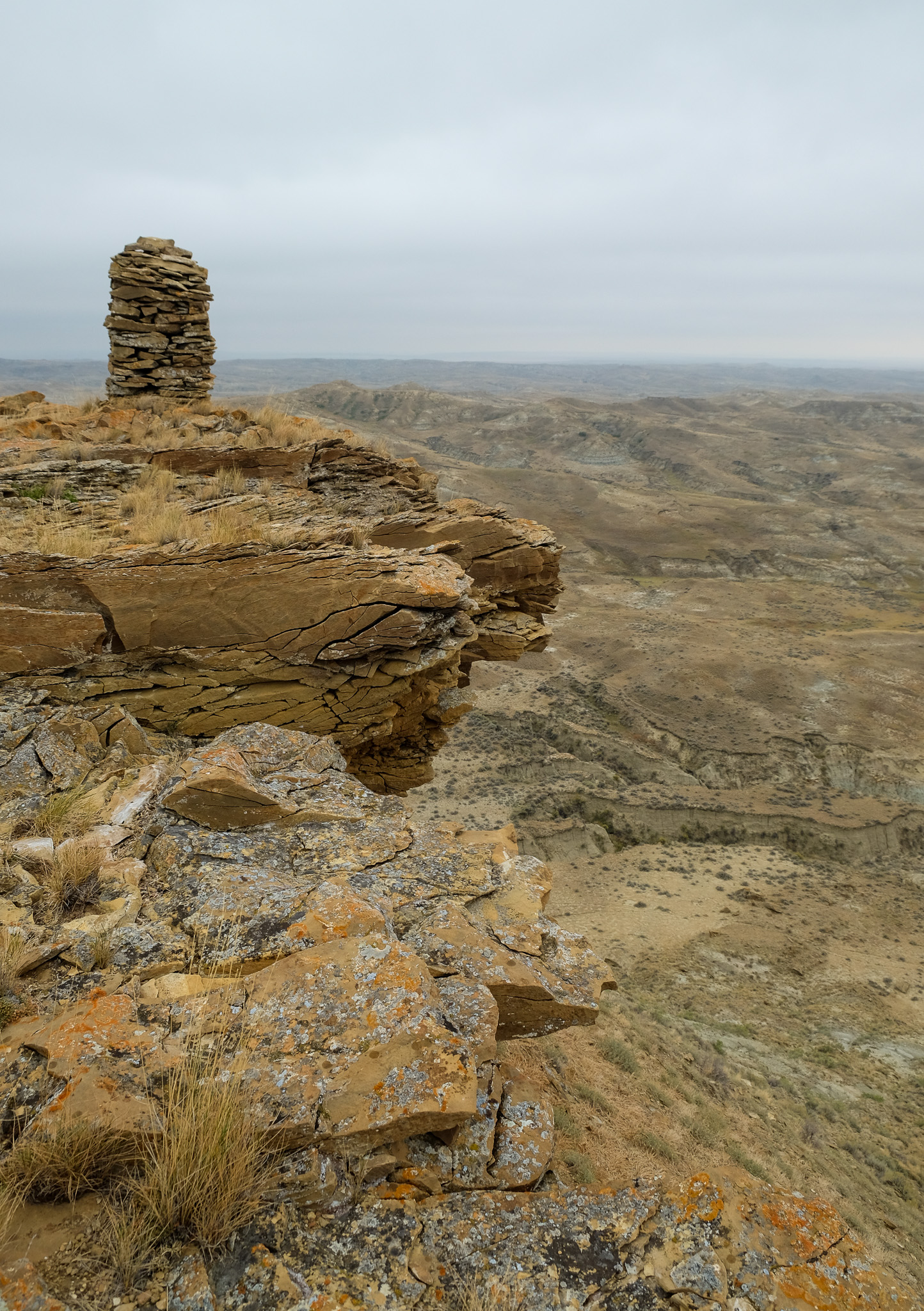
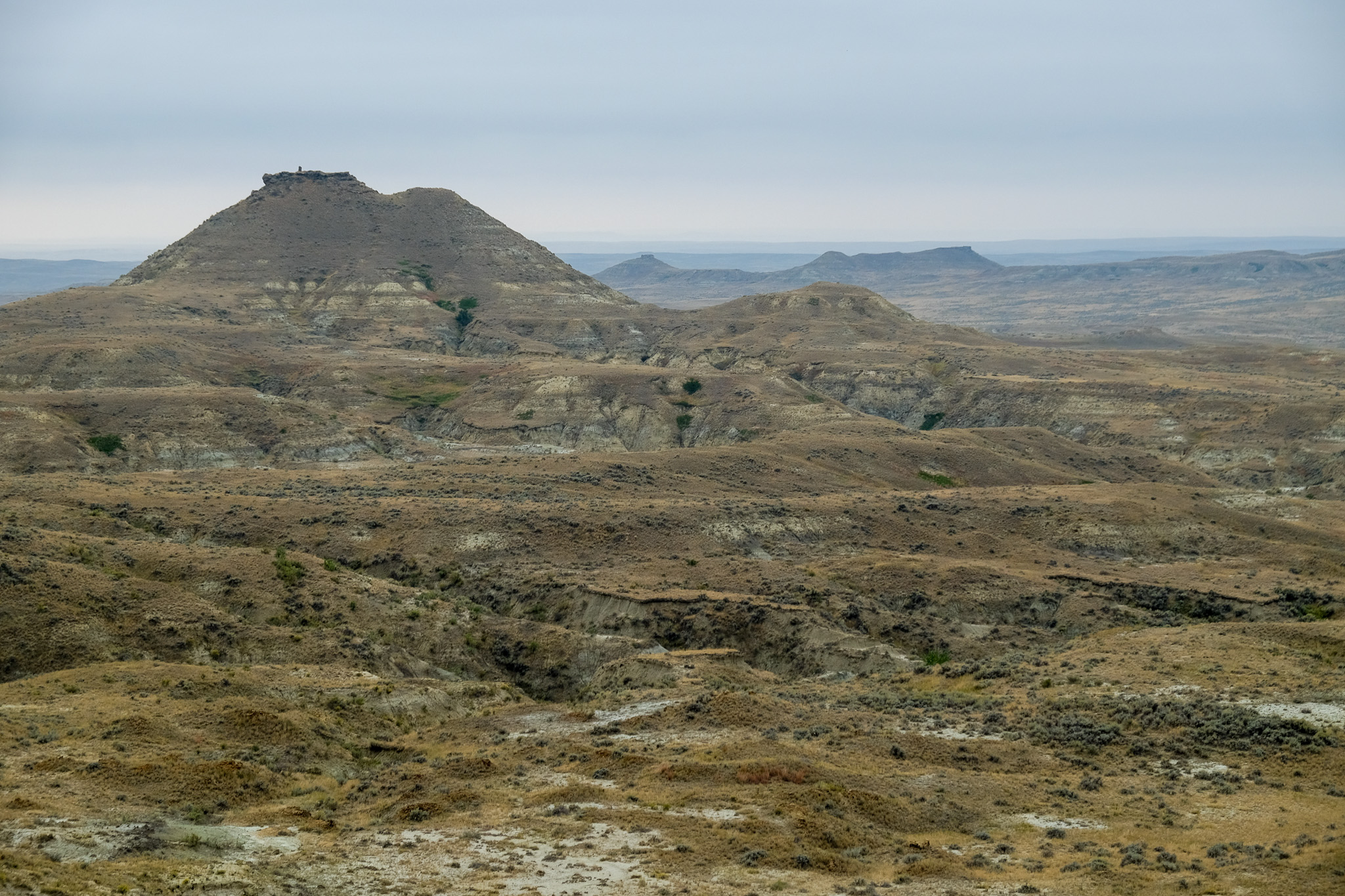
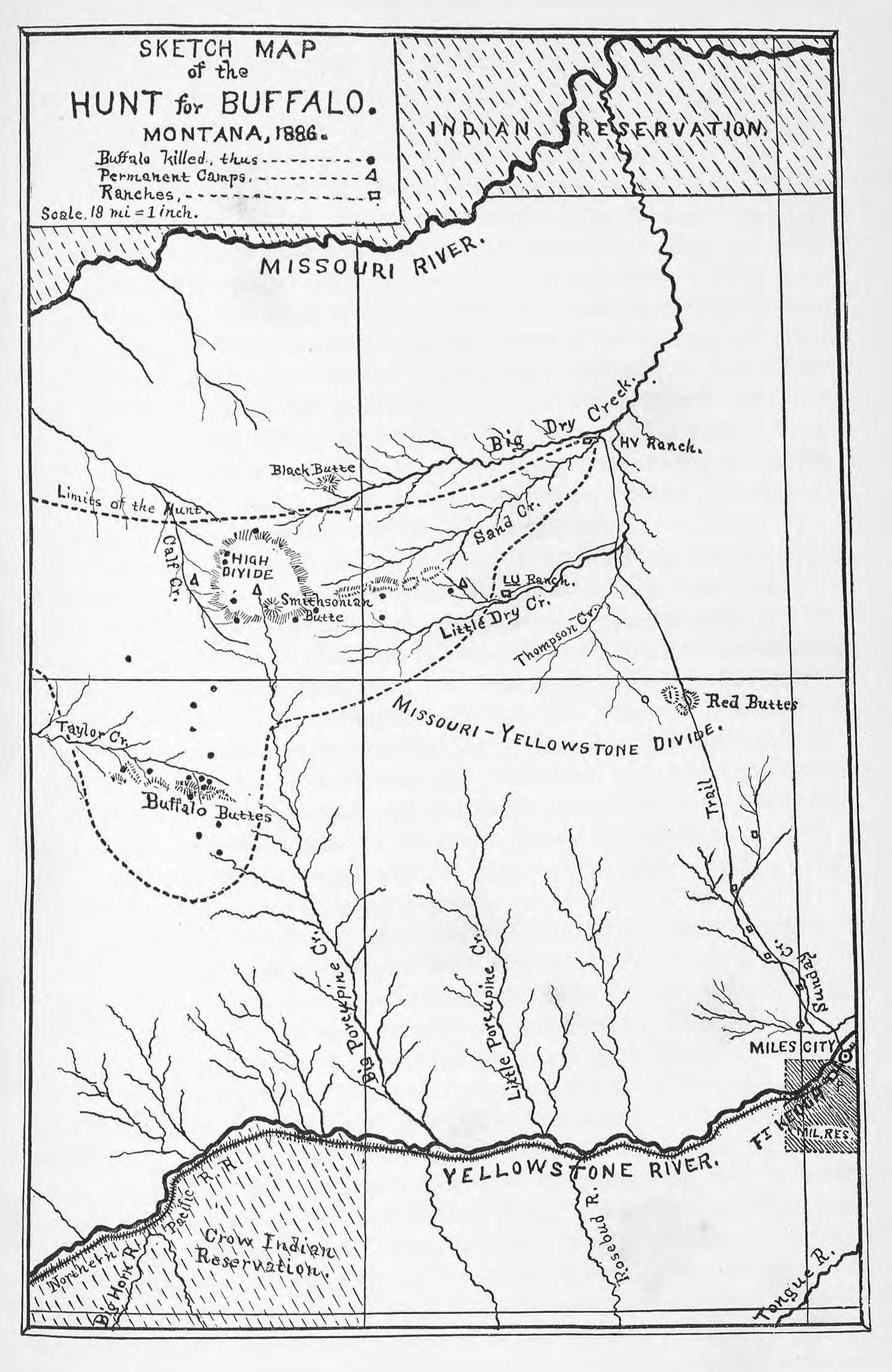
But the idea that simultaneously grew out of Hornaday’s experience was that, with enough public outrage and political muscle, America’s bison (and by extension, other species) might be saved from extinction. He couldn’t have dreamed at the time of the eventual scale of wildlife recovery; his immediate goal was to simply preserve the genome of the species. On an earlier trip to eastern Montana he had captured a bison calf. He gave it a name, Sandy, and had it shipped back to Washington, D.C., where Sandy lived on the grounds of the Smithsonian until it died a few months later. That impulse, to treat bison like a domesticated cow, has been one of the through-lines of America’s relationship with the species ever since.
If he couldn’t trade in live bison, Hornaday was determined to preserve the idea of the species, and brought enough borax and salt to cure several dozen buffalo hides and skulls. For six weeks in the coming winter of 1886, the hunters returned to their miserable dugout after forays into the adjacent badlands, coming back each night with one or two buffalo specimens, along with mule deer and pronghorn antelope. In all, the hunters killed 44 bison, including one of the largest bulls on record. It was the last wild bison hunt of any scale for the next 100 years.
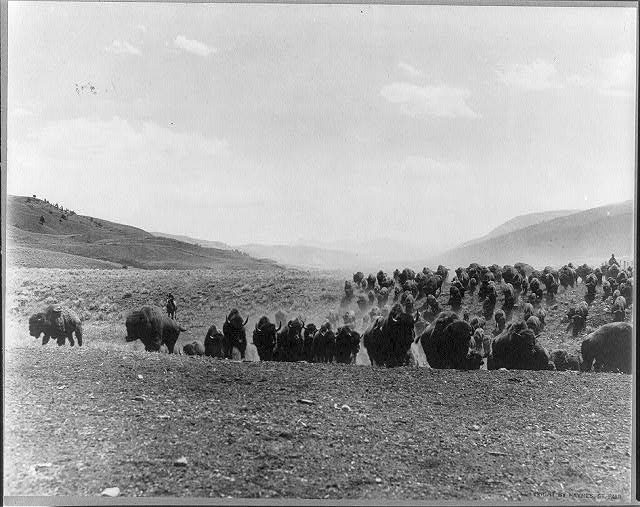
Hornaday’s taxidermied bison resided for 60 years in the Smithsonian Institution’s great hall in D.C. They’re back home in Montana now, residents of the Western Art Gallery in Fort Benton, which is a quiet farming town north of Great Falls. But during Montana’s gold and land rushes, it was the stepping-off spot for Missouri River steamboats and the center of a rollicking frontier economy, fueled in part by buffalo hides and tongues.
The documentary filmmaker Ken Burns spent a good deal of the last decade in and around Fort Benton, collecting footage and perspectives for his latest PBS movie project, a two-part series called “American Buffalo” that aired last week and can now be streamed online.
Burns, whose previous documentary work has retold the stories of the Civil War, baseball, country music, Thomas Jefferson, and jazz, may be best known for his series on Lewis and Clark’s Voyage of Discovery. If every American generation rediscovers the Lewis and Clark expedition, Burns’ latest documentary is evidence that the same thing could be said of bison.
So it’s worth asking, as America revisits its generational fascination with our national mammal, why haven’t we finished our business of recovering bison? Why can’t hunters pursue this iconic American mammal over broad Western wildlands, the same way we do elk and antelope? Why can’t wildlife watchers catch a glimpse of the russet beasts on a distant vista? Why do hunters ask, when they ask about bison at all, about the size of the pasture? Why do questions about fences and genetic purity dog bison hunts the way wolves follow wintering herds in the wild?
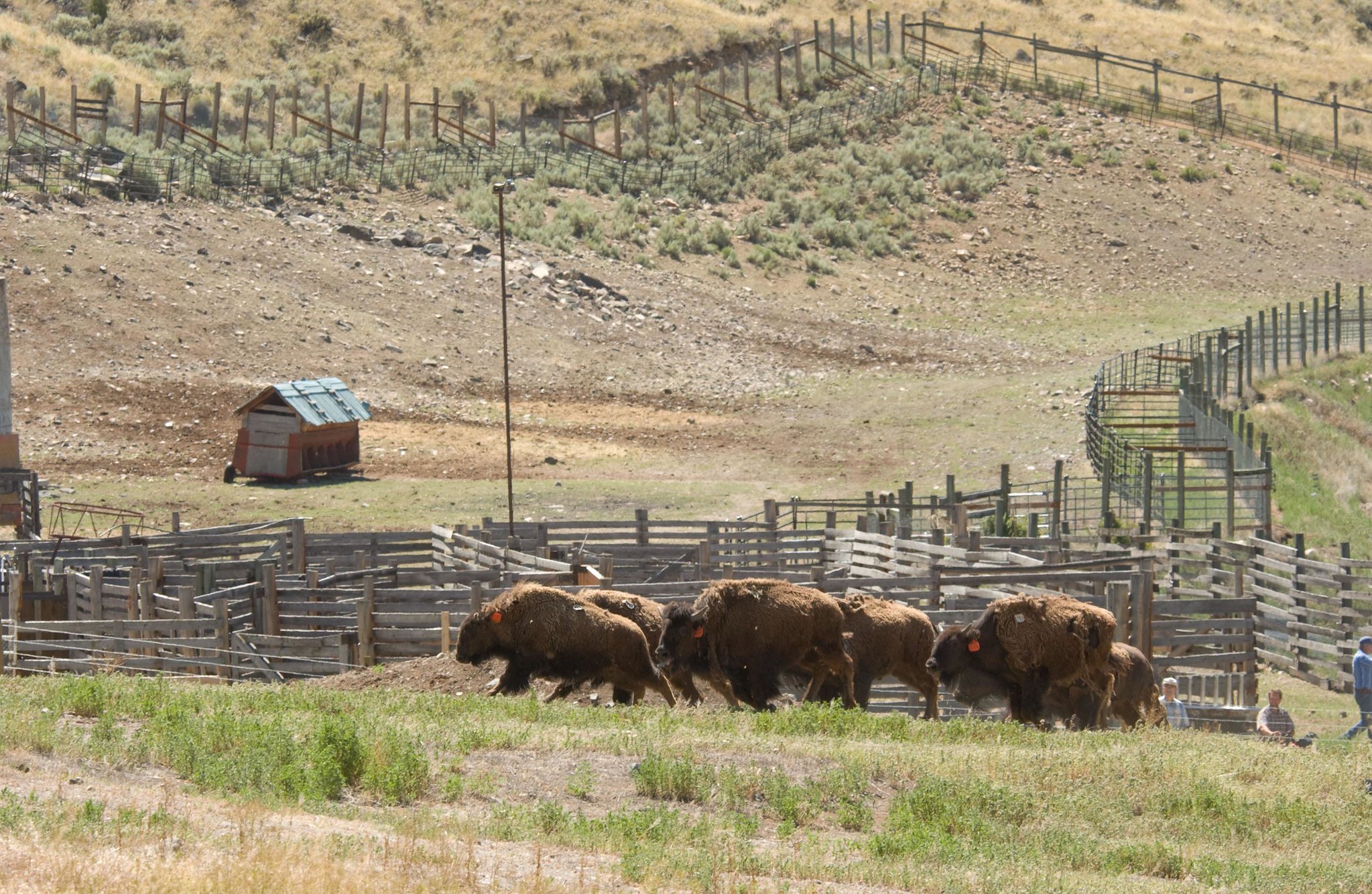
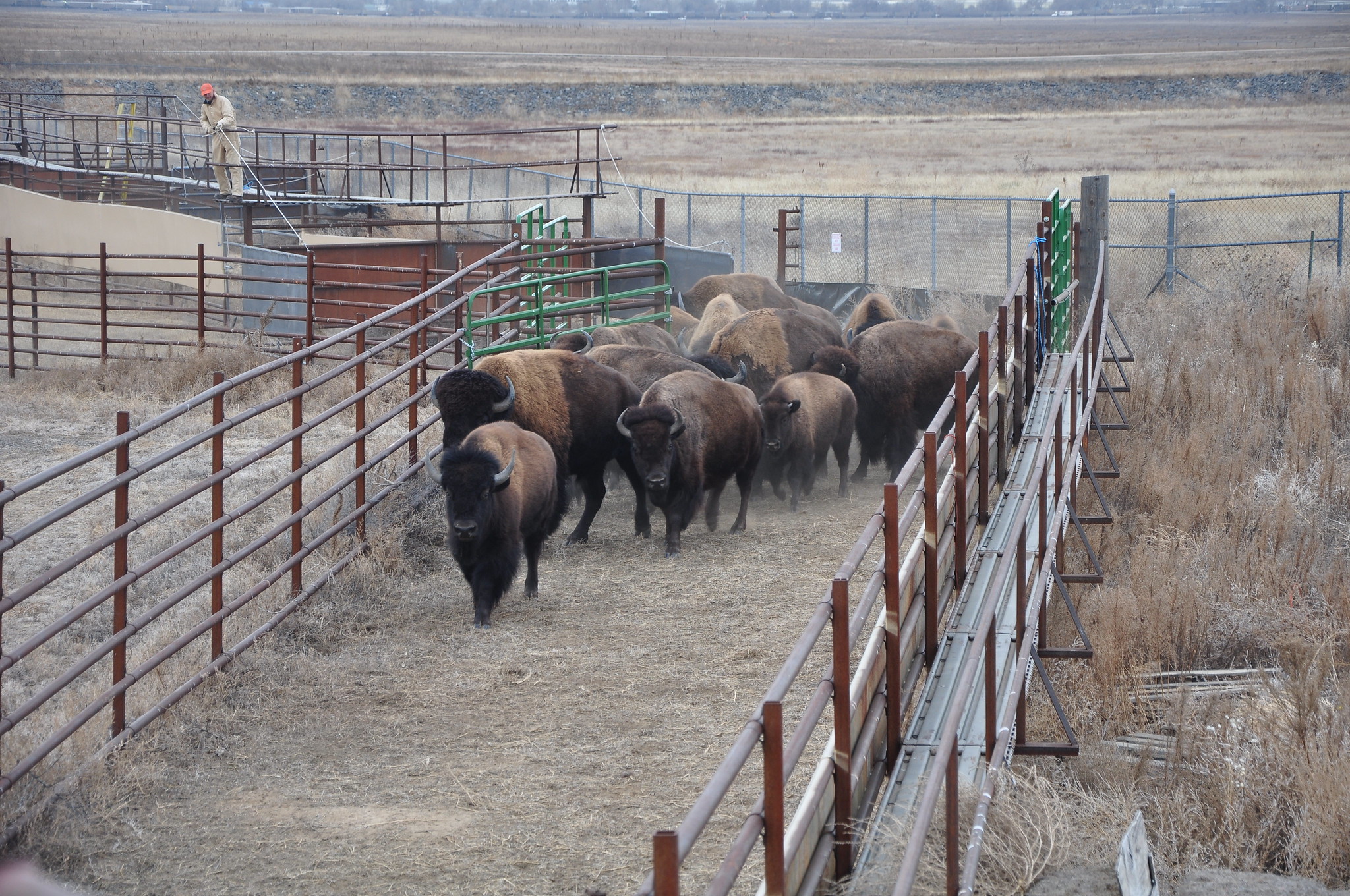
Our failure to recover bison is never as obvious as when we reflect on our successes. The wildlife conservation community recovered whitetail deer, and pronghorn antelope, wild turkeys, and American elk, not to mention smallmouth bass and sandhill cranes. We not only didn’t let Canada geese go extinct, but we preserved wetlands for them. If you need evidence of the success of professional wildlife management, consider that most of the world’s bird species are in steep declines. The notable exception: North American waterfowl and wetland birds that have abundant habitat and advocates, thanks to investments by hunters and wildlife agencies. Why don’t we talk about bison in those same self-congratulating terms?
It’s because, while there are now more bison on the American landscape than any time in the past 150 years, most wear ear tags, have extensive veterinary records, and are classified as livestock. Truly wild bison are as rare and remarkable today as they were in Hornaday’s time.
The Bison Range Is Gone (Maybe) Forever
“Hornaday was interested in stopping functional extinction, a species disappearing forever,” says Justin Spring, longtime head of records for the Boone and Crockett Club, which was formed in 1887, just a year before Hornaday’s expedition with the mission to “promote the conservation and management of wildlife.” Not long after our interview, Spring accepted the position as executive director of the Pope & Young Club. He stressed that he wasn’t speaking on behalf of either organization.
“But you could make the case that bison remain ecologically extinct,” says Spring, because their numbers and distribution aren’t robust enough for them to return to their historic role as a keystone species for an entire short-grass prairie ecosystem.
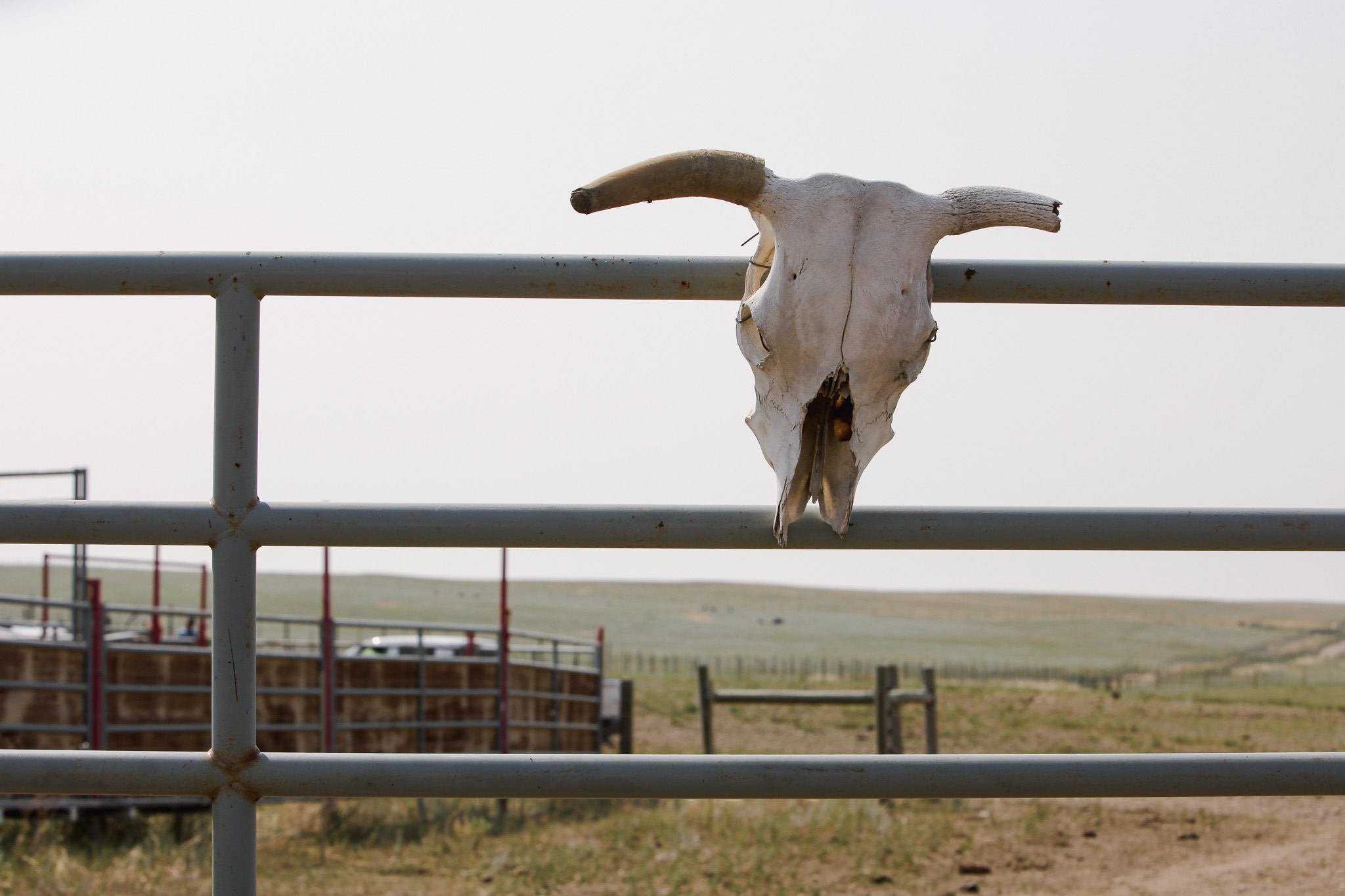
Spring’s downbeat assessment: “I’m not sure that bison are fully recoverable as wildlife. I’m not sure that we have enough habitat left for a functioning bison population. Where do we have contiguous, unobstructed landscapes that aren’t bisected by an interstate or a railroad? I think we have to realistically ask: Do we still have landscapes capable of sustaining the giant herds that were once here? I don’t think so.”
Alison Fox accepts that challenge. Fox is CEO of American Prairie, a Montana-based organization working to stitch together an acreage large enough to conserve one of the most endangered landscapes on earth: the short-grass prairie. American Prairie’s guiding vision is baked into a document developed by landscape ecologists called the Vermejo Statement, which posits that a contiguous block of at least 5 million acres on the Northern Plains is the minimum space required to make a measurable impact in native prairie restoration, with free-roaming bison as the main catalyst for ecological change.
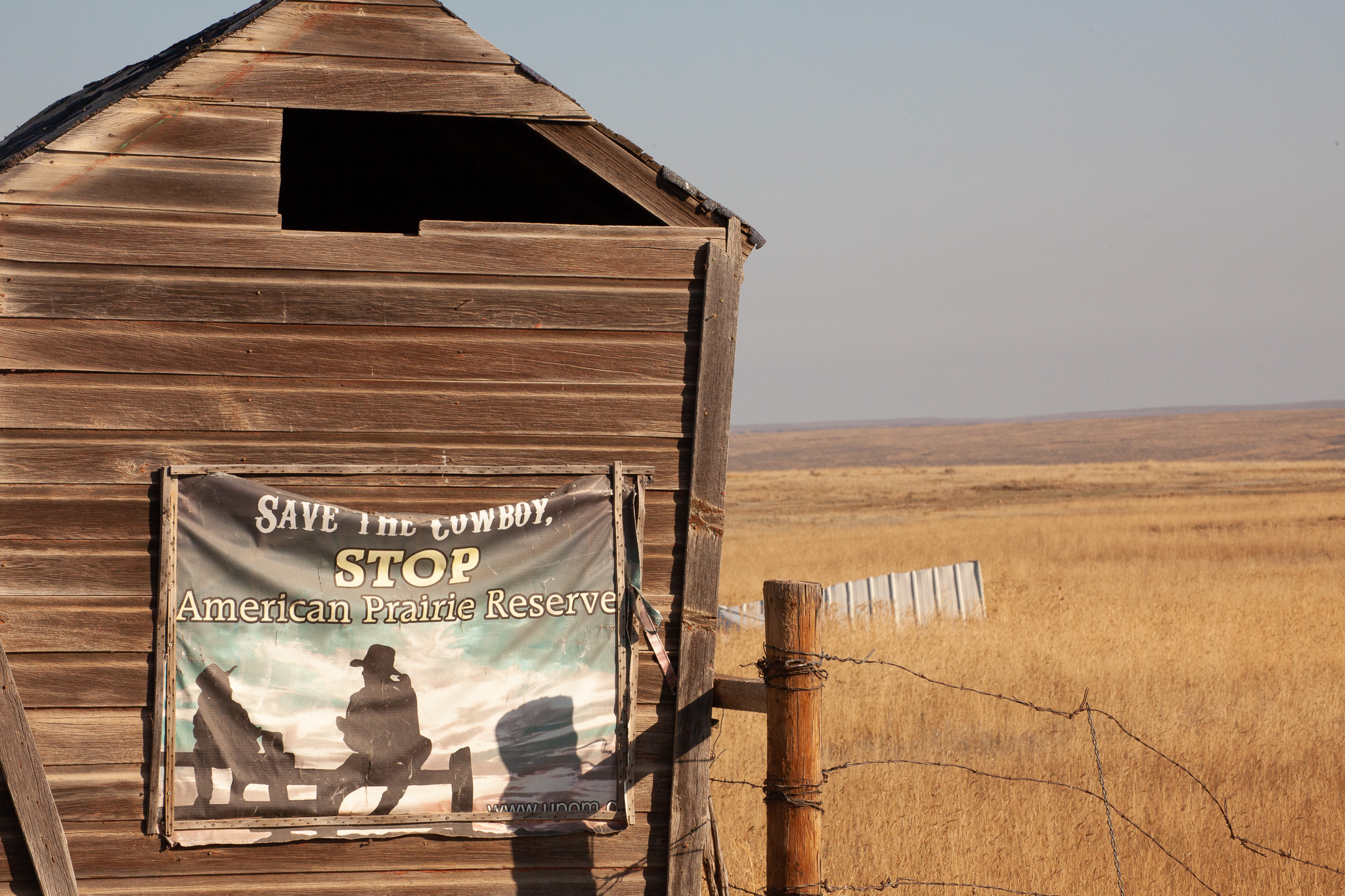
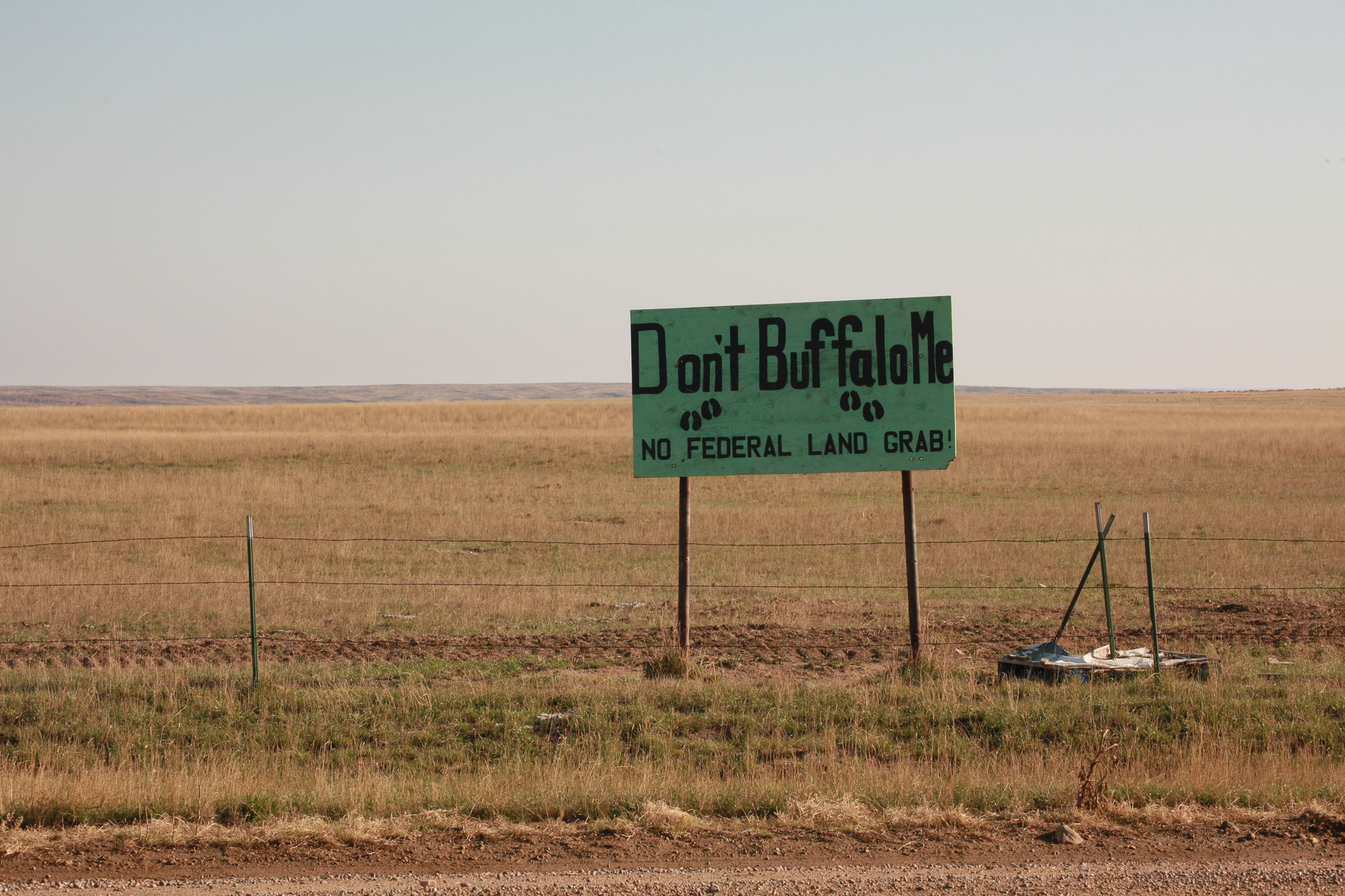
Fox is quick to stress that American Prairie “is not a bison project,” but bison are critical agents of her group’s restoration efforts. “Their grazing patterns, their wallowing, how they use riparian systems, and how they die on the landscape—all have ecological impacts. We want them back on the landscape as that keystone species,” Fox says, to ultimately restore all native plants and animals to this chunk of the Great Plains. The group aims to rewild a 5,000-square-mile land base with the 1.1-million-acre federal Charles M. Russell National Wildlife Refuge at its center. That’s the size of Connecticut, with only a few hundred human residents scattered on rural ranches and in towns along U.S. Highway 2, the highway known as Montana’s Hi-Line that cuts through the town where I live.
“It’s American Prairie’s goal to assemble an additional 2.1 million acres of private and public land bases,” says Fox. “We’ve been at this for 20 years, and we’re at about 460,000 of the 2.1 million [acres] we ultimately want to assemble.”
American Prairie’s core holdings are north of the Missouri River, only about 50 air miles from Hornaday’s bison camp. Drive the two-lane highways of eastern Montana that connect the two sites, and you’ll see signs stapled to corner posts and ratchet-strapped to barns along the way. Silhouetted on the signs are images of a kid and adult, both in cowboy hats, and against the setting sun, the words “Save the Cowboy, Stop American Prairie Reserve.”
It’s a widely held belief that the outsiders buying ranchland and bringing in new ideas about how to live on and relate to the prairie are antithetical to eastern Montana’s rural traditions.
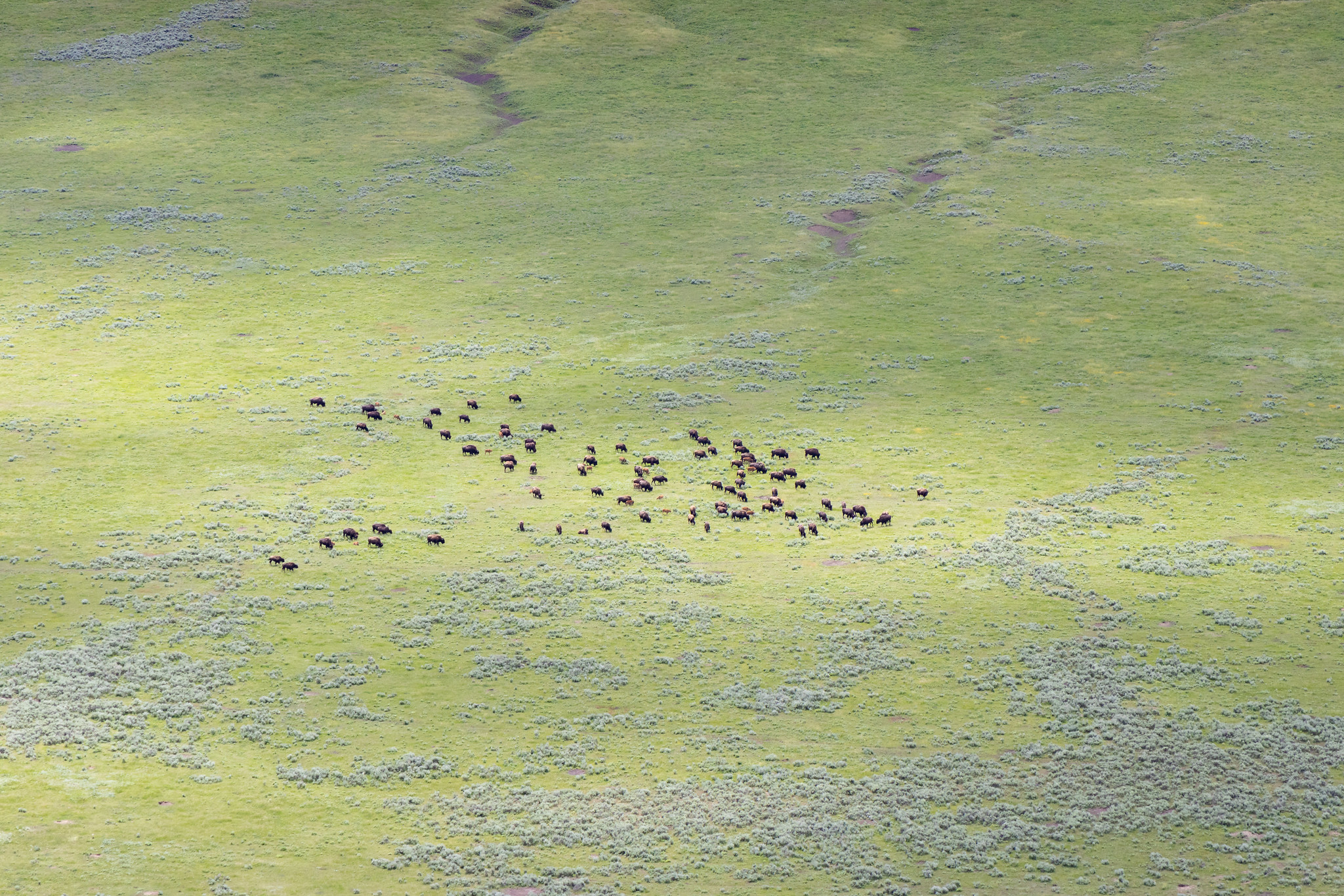
Much of the antagonism directed at American Prairie is from Montana’s cattle industry, which historically has resisted efforts to classify bison as wildlife. Instead, in Montana and most other Western states, bison are classified as livestock, which means they must be fenced, vaccinated, and can be bought and sold like beef cows, a designation that carries strains of Hornaday’s Sandy. American Prairie has successfully converted many of its BLM grazing leases from domestic cattle to bison, a move that caused a furor in the ranching community, legal action from Montana’s governor, and even a bill proposed in the state legislature that would have blocked non-profits from buying land.
Even domesticated bison are intolerable, it seems. But efforts to reclassify bison as wildlife, which would come under the management authority of the state’s Fish, Wildlife & Parks department, have been summarily rejected at almost every level. Reasons to keep bison as private property, instead of public wildlife, range from worries that free-ranging bison would wreck fences, might transmit the virulent disease brucellosis to cattle, and aren’t compatible with private property.
But those are concerns voiced mainly by farmers and ranchers. Most Montanans support the idea of free-ranging bison, according to a 2015 survey that found three-quarters of residents in favor of restoring wild bison populations.
As one of the state’s largest owners of bison, does American Prairie support the idea of bison as public wildlife, or as domestic livestock?
“We are focused on growing our own herd,” says Fox.” We have said publicly that if the state of Montana ever decided to start a population of bison somewhere outside of Yellowstone National Park, we would be an enthusiastic participant in that. But in the short and medium term we are very focused on growing our herd over the biggest landscape that we can.”
Free-Range Bison Hunting Is Rare
Don’t get the idea that bison are either mothballed in natural-history museums or waiting to die in commodity pastures. A number of states have figured out how to manage bison as wild, huntable resources. Utah conducts a pair of popular hunts, one in the Henry Mountains north of Lake Powell, the other in the remote, rugged Book Cliffs near the Colorado border. Wyoming distributes permits for wild bison hunts in Grand Teton National Park, and in South Dakota, drawing a Custer State Park bison hunting permit is a pinnacle achievement for a resident hunter. In Montana, the state’s FWP manages a hunt for wild bison that roam outside of Yellowstone National Park. Over the last several years, though, the number of hunting opportunities for Yellowstone Park bison have tipped toward American Indian tribes who claim treaty rights to hunt descendants of bison that escaped Hornaday’s pursuit and found refuge in the park.
It should be noted that, with a few exceptions, a modern bison hunt isn’t the wide-ranging wilderness quest that Hornaday experienced. Justin Spring notes that the behavior and habitat requirements of bison make fair-chase hunting problematic.
“They’re a giant herd animal that we were basically able to eradicate from the back of a train,” says Spring, referring to the bison massacres of the steam-engine era. “You could argue that the most challenging thing about hunting them now is drawing a tag and finding a place to hunt them. But beyond some of those Utah hunts, it’s not your classic fair-chase hunt, like it is for going after a buck or a bull or a mountain sheep. Most hunters don’t have a strong desire to shoot a cow in a field.”
Many bison owners sell or donate hunts, both to manage populations and to help keep their herd wild. American Prairie raffles or donates several dozen hunts per year, and any internet search will turn up glorified pasture hunts for semi-wild bison on ranches from Texas to Alberta.
But despite—or maybe because of—these private efforts, it’s worth asking: Why haven’t bison joined the club of wild mammals whose populations are thriving thanks to managed public hunting? Where did our paradoxical hunt-animals-to-save-them go so wrong when it comes to bison?
Kit Fischer has some insights. The Director of Wildlife Programs for the National Wildlife Federation out of Missoula, Fischer spent nearly 15 years barnstorming rural Montana, trying to organize sportsmen around public bison restoration, specifically on the Charles M. Russell refuge, the 1.1-million acre chunk of federal land at the center of American Prairie’s bison restoration efforts. The collective efforts of the National Wildlife Federation and other conservation groups came close to a win with an environmental impact statement draft two years ago that would have been a precursor to restoration of bison on the CMR.
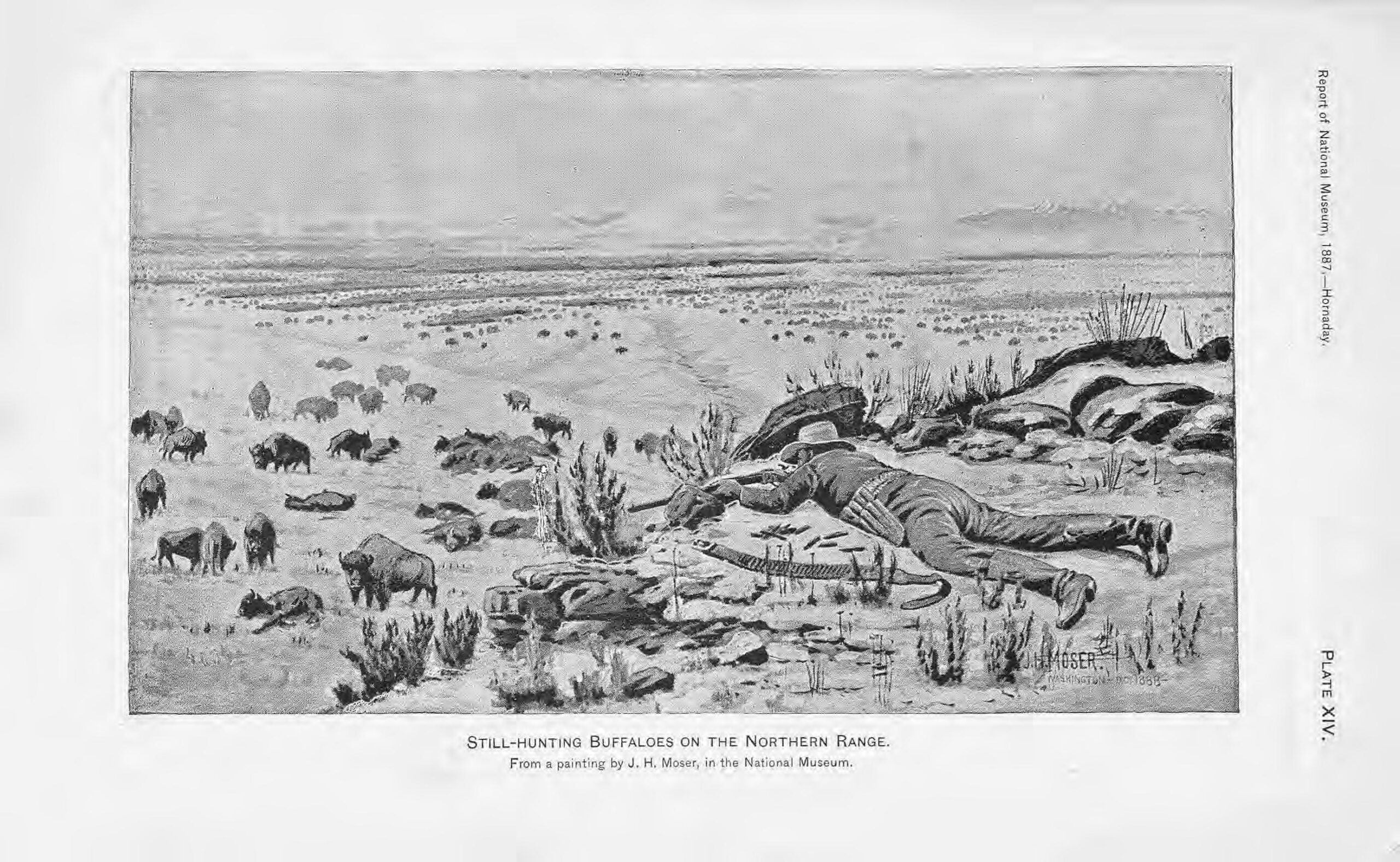
But the Department of the Interior abandoned the initiative when it appeared there was little appetite to push the measure through Congress, and Montana’s congressional delegation wasn’t interested in burning political capital on the deal. Closer to where bison live, county commissioners have passed resolutions banning bison translocations, and earlier this year Montana’s legislature passed a resolution opposing bison introduction on the CMR.
The issue has even ascended to the national level. Just last month, eastern Montana’s congressional representative, Matt Rosendale, attached a rider to the federal Farm Bill that prohibits funds to be used by the Secretary of the Interior “to facilitate or allow for the introduction of American bison on the Charles M. Russell National Wildlife Refuge.”
“Here is a federal wildlife refuge that contains some of the most intact prairie habitat, on a property specifically designated for wildlife, with periodic [presidential] administrations that are friendly to the idea of establishing a bison herd, and yet we’ve met resistance at every turn,” says Fischer. Besides conservative politicians, most of the resistance is from ranchers, who claim public bison would put them out of business.
But Fischer and other conservation leaders keep hearing from a community that isn’t so resistant to the idea of bison restoration: tribal nations whose cultural history is closely tied to bison.
“After years of pulling and dragging sportsmen along, we started working more with the tribes, who couldn’t be more thrilled about the concept of bison restoration,” says Fischer. Similarly, American Prairie is working with the Fort Belknap Tribes as partners in bison management on AP land that borders the reservation. And multi-tribal organization around the idea of restoration of America’s bison in Indian Country is gaining momentum.
The inclusion of tribes in bison restoration starts to address two strains of unfinished business with America’s Western expansion.
“You can’t talk about the eradication of the bison without talking about the eradication of the American Indian,” said one longtime bison conservationist. “I often get the feeling that we’re absolving our guilt over what we did to Indians by focusing so hard on bison. But you can’t really separate the two, which is why it’s right that the path to bison recovery should be led through tribal efforts.”
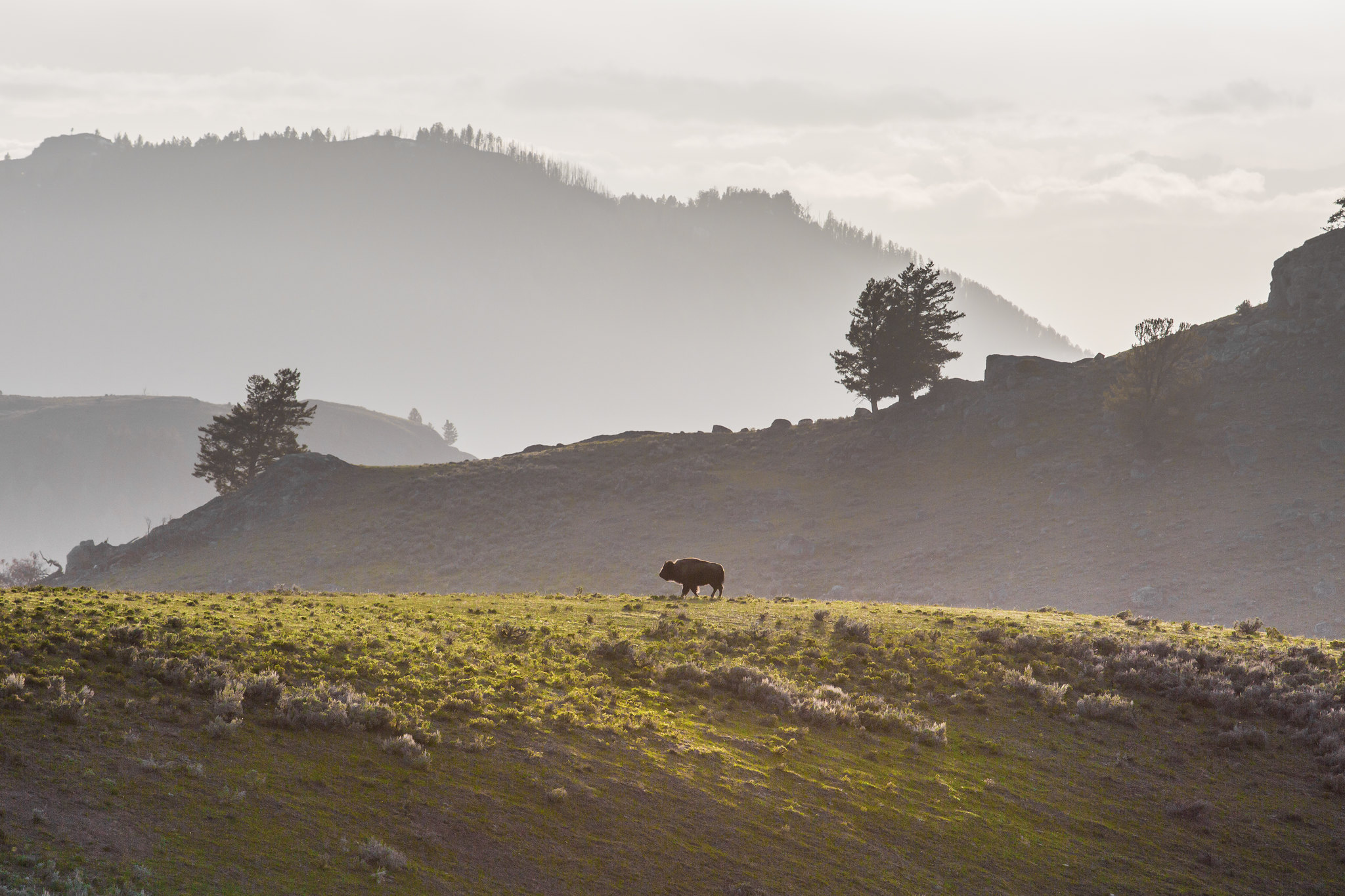
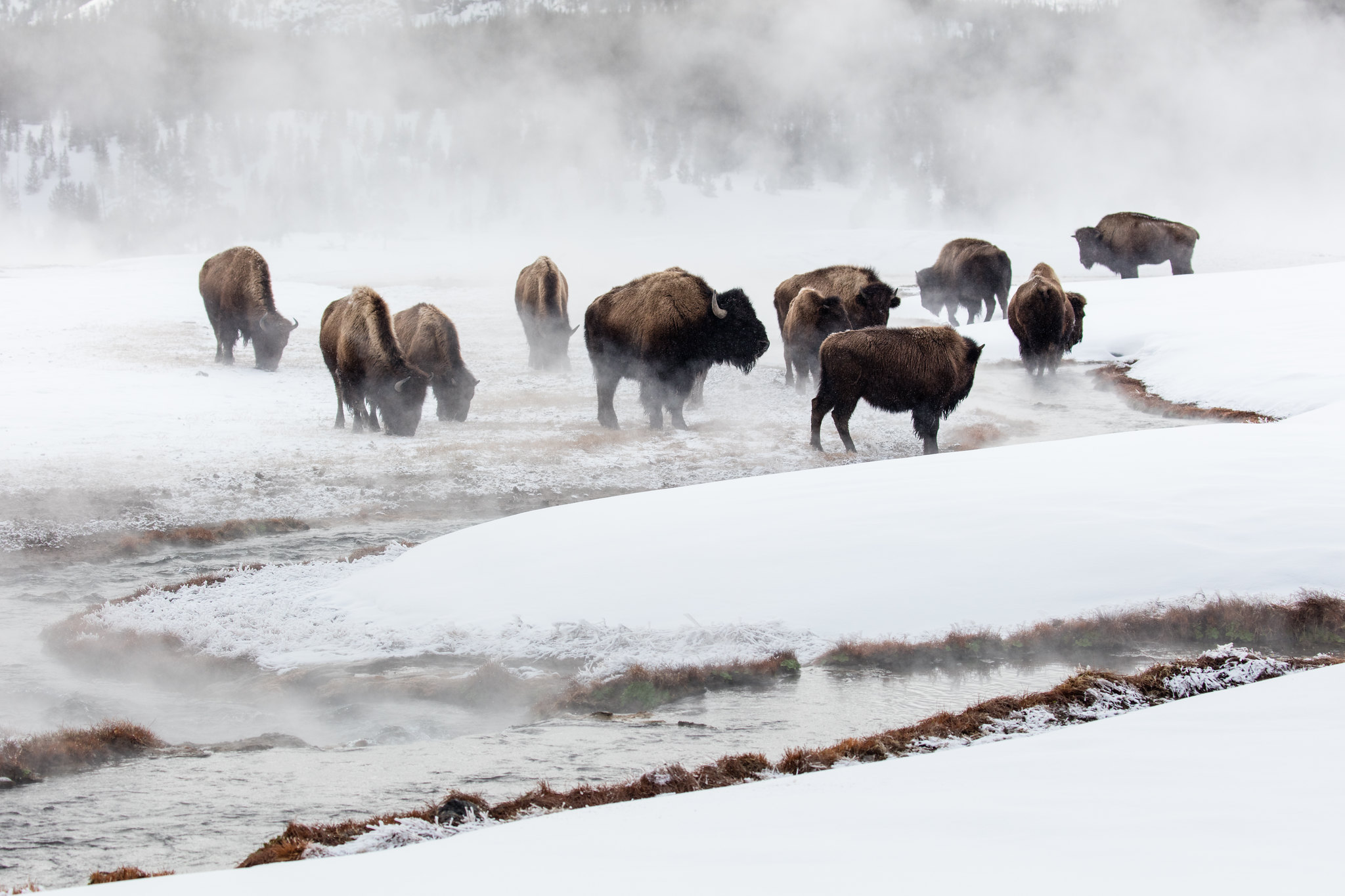
Two hundred miles east of the American Prairie properties, Robbie Magnan doesn’t concern himself with the politics of the past. Magnan is the head of the Fort Peck Tribes’ fish and game department and the director of the tribes’ bison program, which receives surplus animals from Yellowstone National Park, contains them in a disease-quarantine facility, and distributes them to other tribal nations, in exchange for keeping a few bison for its conservation herd.
“We actually have two herds,” says Magnan, looking out at a labyrinth of corrals that serve as intake facility for Yellowstone’s surplus bison. “One is our business herd, where we sell bison hunts to non-members. Then we have our cultural herd, which is managed to provide sustenance to our people through traditional ceremonies and providing food to our diabetes program.”
This irony of the original dispossessed inhabitants of Montana’s prairie selling bison hunts to non-Indians is one of the strange twists of the American buffalo story.
Tribal Conservation Might Be Our Last Best Hope
The renewed interest in bison by tribal nations, along with the ambitions of American Prairie and other private-land bison concerns, means that America’s most iconic animal—the bison was designated as our national mammal in 2016—might yet be ecologically recovered. That’s one of the take-aways from Ken Burns’ PBS documentary. He divides the story of America’s bison into two parts, the grim history and the hopeful future. That future might lie with the people who are most closely identified with the bison, America’s tribal members, who are increasingly not satisfied with waiting for others to decide the status of bison.
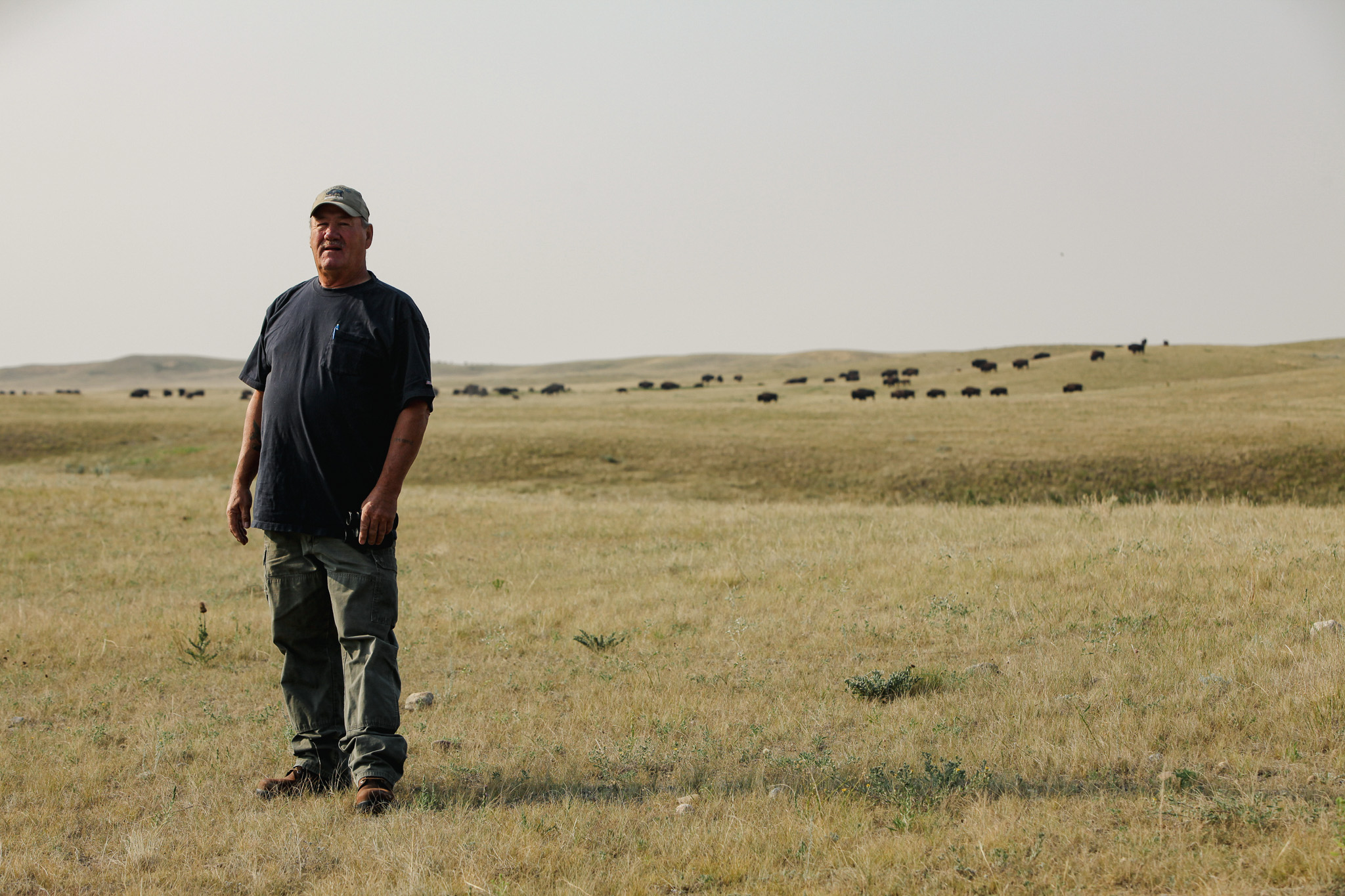
In June, the Blackfeet Nation released 25 descendants of a bison herd saved from slaughter over 100 years ago. The tribe plans to let the bison roam freely across the reservation, and it’s a good bet that within a few years their offspring will graze into neighboring Glacier National Park. They might also expand south into the extensive public lands of the Bob Marshall Wilderness Complex.
Two years ago the Chippewa Cree of the Rocky Boy reservation celebrated the return of bison to tribal lands in north-central Montana. Five of the 11 bison released were from American Prairie’s herd. The other six were from tribal herds elsewhere.
Read Next: The Buffalo Revivers of the Wind River Reservation
Over east on the Fort Peck Reservation, with more than a decade in bison management, Mangan puts his department’s work into context.
“We didn’t have buffalo here for over 100 years, and we almost lost all the ceremonies that are connected to the buffalo,” says Mangan. “But now the buffalo are back and the ceremonies are coming back. With the ceremonies, we are seeing more interest in learning our language and remembering other aspects of our culture.”
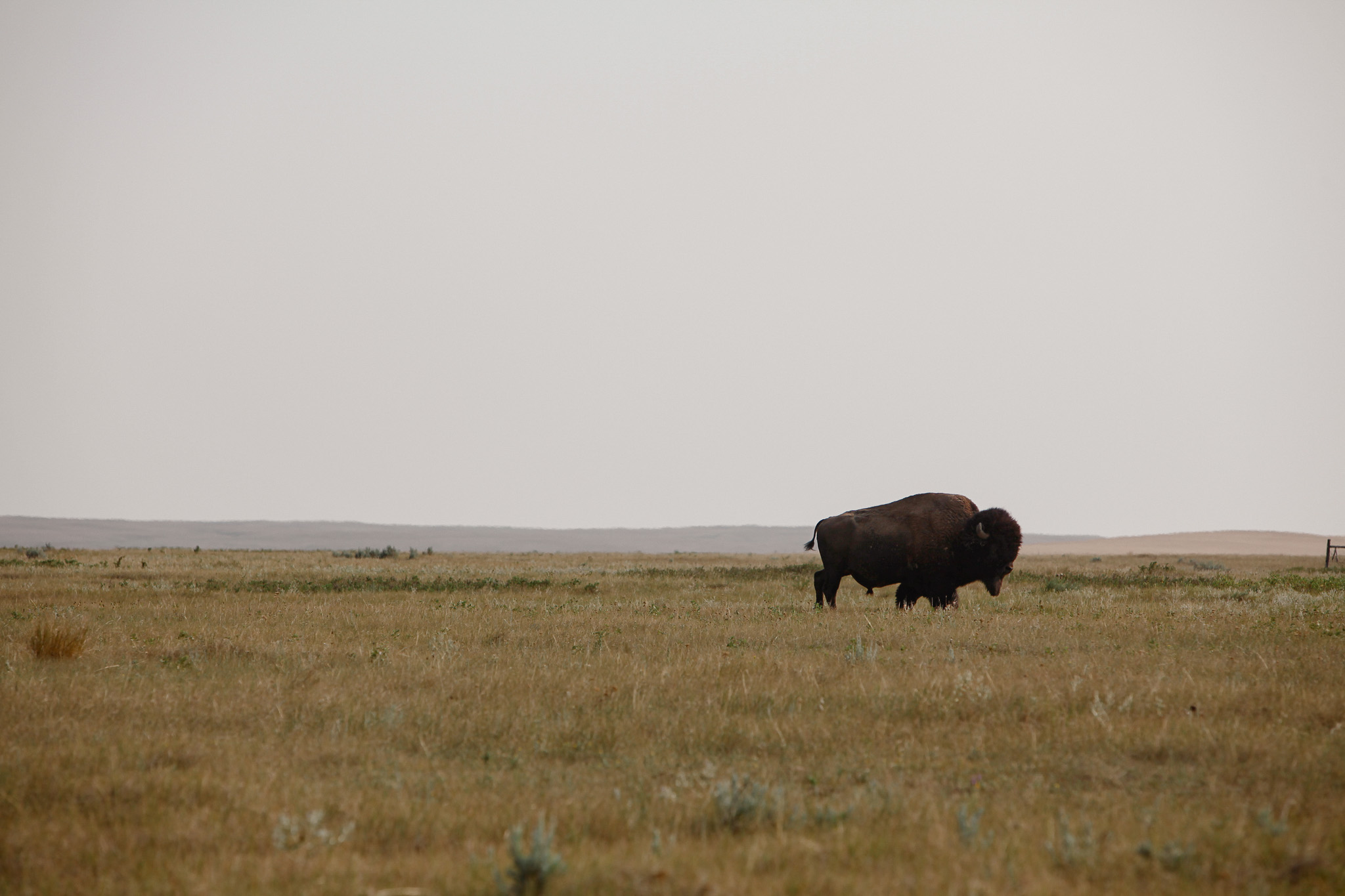
Meat from bison is used in powwows and other ceremonies, and it’s also being used in tribal food programs as a way to reconnect with an animal that fed contemporary Native Americans’ ancestors but can also reduce the prevalence of diabetes in the community.
“It’s a lean, healthy meat,” says Mangan, who offers that bison also have a spiritual sustenance for his Sioux and Assiniboine tribes. “There’s a creation story that buffalo were put on earth to keep us alive. The buffalo fed us when we were starving and gave us shelter when we were cold.”
But what that might look like on lands outside Indian reservations is a question that hasn’t been resolved. One model might be co-management of bison on national wildlife refuges, including the Charles M. Russell NWR. There’s a precedent. In 2021, the U.S. Fish & Wildlife Service transferred the National Bison Range to the Salish and Kootenai tribes of northwest Montana. The 19,000-acre Bison Range sits entirely within the boundaries of the Flathead Indian Reservation.
Tribes have been in contact with refuge managers elsewhere in Montana to discuss the future of bison restoration on public lands. Whether that might include BLM lands inside or outside the American Prairie holdings, is an open question.
What is clear is that tribes aren’t waiting to be asked to join the conversation about bison.
“Ever since the beginning, the buffalo has taken care of us,” says Fort Peck’s Mangan. “Now it’s our turn to take care of them.”

